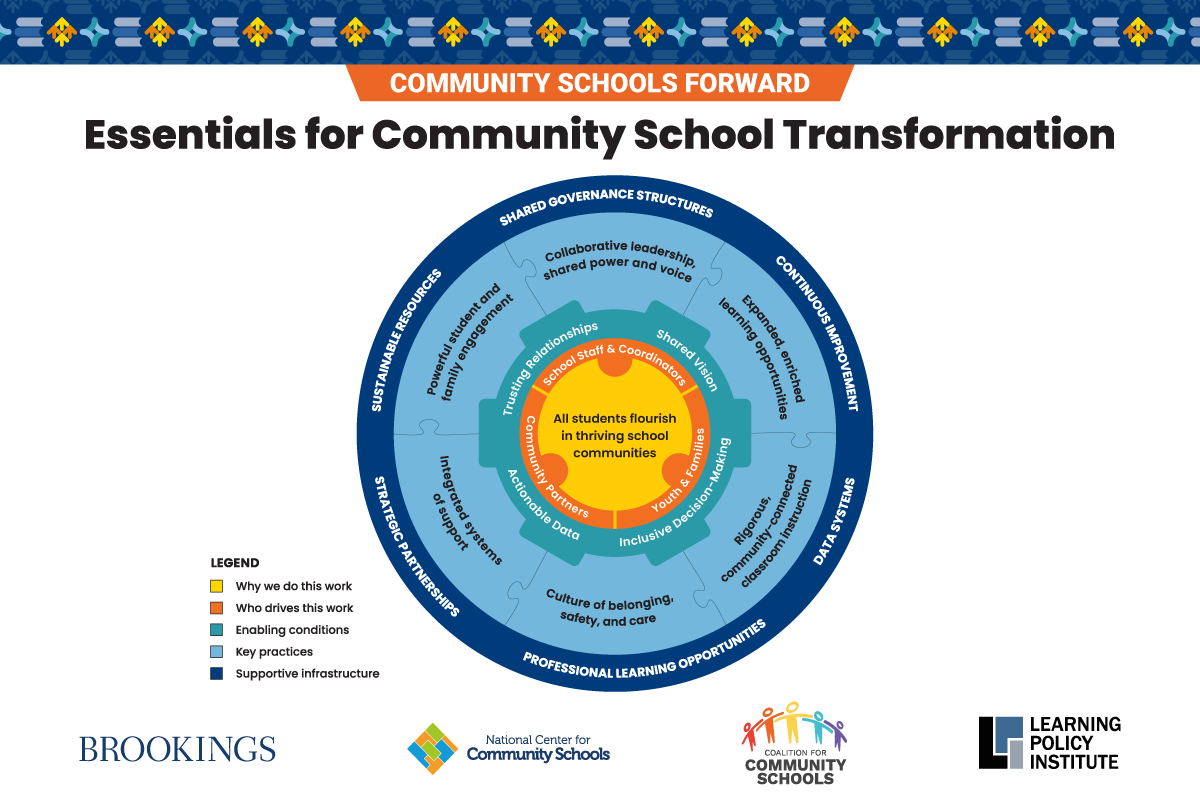
“At Lynn Community Middle School in Las Cruces, New Mexico, students’ dental needs were met at a school-based clinic. At Brooklyn Center Middle and High School in Minnesota, enrichment classes boosted student engagement. And at Bridges Academy in Oakland, California, a teacher dedicated to culture and climate interventions supported students in meeting their behavioral goals. These examples highlight different promising practices in community schools across the country, but these practices are only one small part of what makes these places community schools.
Community schools are a research-based, comprehensive school transformation strategy in which educators, local community members, families, and students work together to strengthen conditions for student learning and healthy development. As partners, they organize in- and out-of-school resources, supports, and opportunities so that young people are able to thrive. Although community schools have been around for more than a century, modern community schools—designed around whole child structures and practices—have been gaining momentum in recent years, supported by increases in state and federal funding and by the attention community schools received for providing services to and connecting meaningfully with families during the pandemic.
Over the past two years, a national collaboration called has highlighted how the community schools strategy aligns with evidence-based practice and research. The collaboration has developed a number of resources to illustrate that alignment, including a framework capturing the essential elements for high-quality community school implementation.
This framework was developed in consultation with over 700 practitioners, non-profit leaders, teachers, coordinators, researchers, and policymakers, among others. Importantly, it synthesizes long-standing experience from practitioners; existing models of community schools, including the four evidence-based pillars identified in LPI’s 2017 research review and adopted into policy in places across the country, the National Education Association’s Six Pillars, and the Coalition for Community Schools’ Standards; and recent research on the science of learning and development. The result is an evolved framework which includes six key integrated practices.
The first four of the six key practices grew directly out of the four pillars. Based on the voices and experiences of hundreds of practitioners and latest research on how children learn best, the Community Schools Forward team also added two new practices:
- Integrated systems of support: School staff and community partners should systematically coordinate health and social services, academic and nonacademic supports, and enrichment opportunities in a manner that fosters student wellbeing.
- Expanded and enriched learning opportunities: Students need access to before- and after-school and summer opportunities in which they can explore their passions, apply academic content beyond the classroom, and build knowledge.
- Powerful student and family engagement: Families and students must be active participants in the school community and serve as key partners in decisionmaking and shaping the school’s environment and priorities.
- Collaborative leadership and shared power and voice: Families, students, teachers, principals, and community partners should make decisions together through formal and informal structures.
- Rigorous, community-connected classroom instruction: The curriculum should connect high-level content and skillsto students’ identities, cultures, and experiences, and students should engage in inquiry-based learning that addresses issues they care about in the world around them.
- A culture of belonging, safety, and care: Schools ought to be welcoming places that foster caring and trusting relationships. Everyone should be valued for their experiences and encouraged to share their views and take appropriate risks.
There is no doubt these two additional practices are essential for community school success, as illustrated in Oakland Unified School District, where community schools operate systemwide.”
Read the full post here.